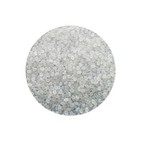Introduction and use of polypropylene
Definition and Features
Polypropylene (PP) is a thermoplastic resin and is one of the five general-purpose resins. Appearance is white granular material, tasteless and non-toxic. Due to the regular crystal structure, it has the advantages of easy processing, impact strength, flex resistance and good electrical insulation. has a wide range of applications.
The structural characteristics of PP determine its five major characteristics: (1) Its molecular structure is similar to that of polyethylene, but the carbon atoms in the carbon chain have a methyl group (–CH3). (2) Usually translucent and colorless solid, odorless and nontoxic. (3) Due to the regular structure and high crystallization, the melting point is as high as 167 ° C, heat resistance and the products can be sterilized by steam are its outstanding advantages. (4) The density is 0.90g/cm3, which is the lightest general-purpose plastic (10955, -50.00, -0.45%). (5) Corrosion resistance, tensile strength 30MPa, strength, rigidity and transparency are better than polyethylene.
However, the disadvantage of PP is that it has poor low temperature impact resistance and is easy to age, which can be overcome by modification and addition of antioxidants.
In the past ten years, my country's polypropylene consumption has grown at an average annual rate of 10%, which greatly exceeds the world's average growth level. It is the second largest consumption of synthetic resin in my country, second only to polyethylene. The strong market demand has also led to the rapid growth of polypropylene production capacity and output. Among the five general-purpose plastics, the output ranks third after polyethylene and polyvinyl chloride.




